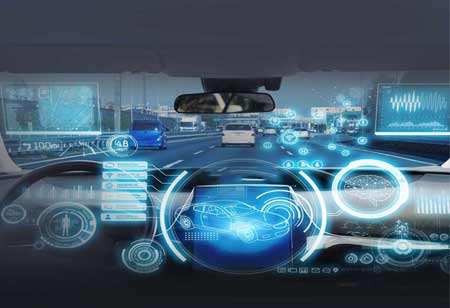THANK YOU FOR SUBSCRIBING
THANK YOU FOR SUBSCRIBING
Be first to read the latest tech news, Industry Leader's Insights, and CIO interviews of medium and large enterprises exclusively from Auto Tech Outlook

By
Auto Tech Outlook | Tuesday, April 18, 2023
Stay ahead of the industry with exclusive feature stories on the top companies, expert insights and the latest news delivered straight to your inbox. Subscribe today.
Enhancing the cybersecurity capabilities of smart vehicles opens up formidable opportunities in the automotive space.
FREMONT, CA: IT security in the transport infrastructure offers varied services in addition to ensuring the security of cars. That is, the autonomous modelling of cars has led to an increased dependence on external information, due to which business leaders in the automotive space are seeking out feasible opportunities for establishing security in the arena.
For instance, say the external information is derived from roadside units, overlooking the necessary factors such as data on the condition of the roads, hazards, and possible accidents that could likely happen in space. These tech details are often derived for potential intentions like maximising traffic flow with no compromise on safety and mitigating automotive impact on the environment by shortening drive times and thus reducing emissions. This information is often processed into an individual automotive device, say a car, with a high degree of security compliance in the cybersecurity space. However, a security leak in the environment turns the car vulnerable to cyberattacks, thereby elevating the risk factors.
In a smart-based automotive space, developing autonomous vehicles is likely soaring in recent times, where induced usage of sensors critically refers to a better reaction to traffic scenarios. Deploying increasingly sophisticated software is taming driving for a more convenient and safer practice with intensified communications offered between the vehicle and the large transportation system.
The system is connected with varied sets of growing interfaces in the arena that hold critical possibilities for attacks in cyberspace. Wherein, harnessing a standalone system can scarcely cope with threats in the automotive space. Furthermore, traffic safety in the arena highly depends on the consistent security standards that are ensured and followed by manufacturers and suppliers. The innovation is highly promoted by a strategic template of system design in the arena.
Hence, the technical chain, from hardware to control units and internal and external communication interfaces, is highly crucial and ought to be taken into consideration by manufacturers and suppliers in the automotive space. It assists in moulding an all-in-one solution for the challenges protracting in the arena via a comprehensive and secure system design. Similarly, manufacturing hardware security modules (HSM) via different entities that are operated simultaneously requires critical support, for instance, a hardware abstraction layer. Wherein, enabling the required support via distinguished services and microservice deployments facilitates increased flexibility for business leaders in the automotive space while ensuring cybersecurity alongside.
Innovation frontiers in the arena are developing prototypes with specifications that are yet to be covered by the market, thereby implementing quantum-computing-resistant algorithms.
 Copyright © 2025 AutoTech Outlook. All Rights Reserved | Privacy Policy | Subscribe | Sitemap | About us | Feedback Policy | Editorial Policy
Copyright © 2025 AutoTech Outlook. All Rights Reserved | Privacy Policy | Subscribe | Sitemap | About us | Feedback Policy | Editorial Policy 



